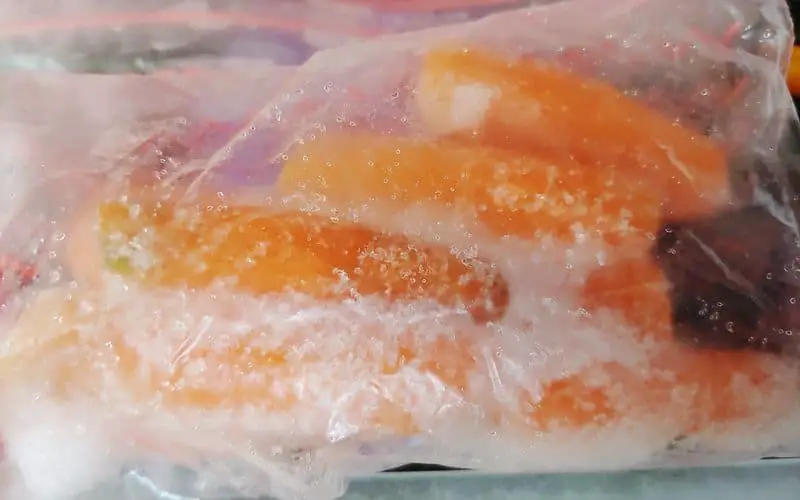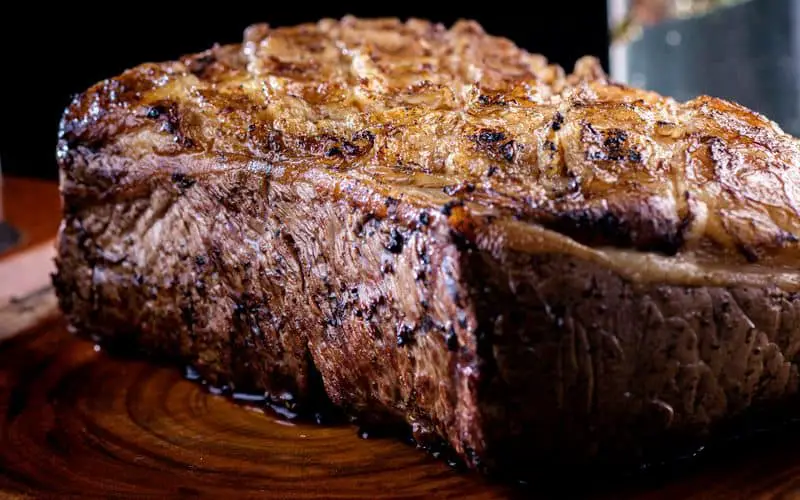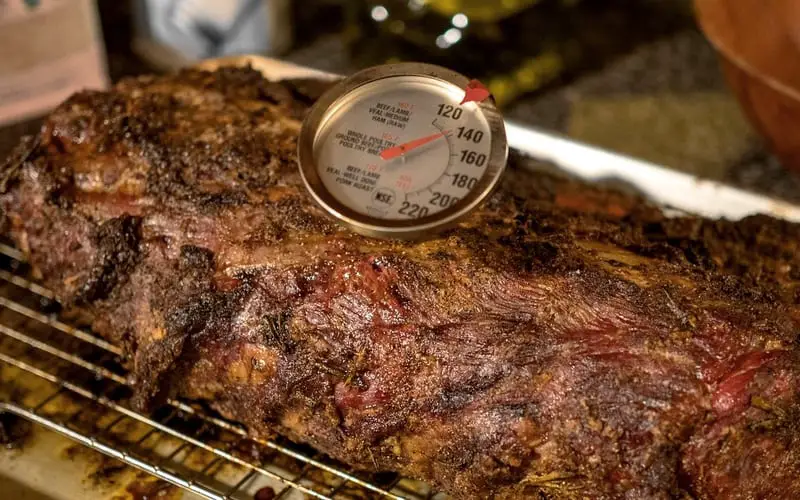Today, we’re tackling a burning question that stumps many backyard chefs: “Can you grill frozen food?” If you’ve ever opened your freezer and realized the steak you planned on grilling is still a frozen block, then this post is for you.
If you are here just for the quick answer, here it is:
Yes, you can grill most frozen food. Some can be grilled without thawing but the cooking time must be adjusted by about 50%. Other foods are better done by thawing them first.
Grilling, as we all know, is an art. It requires patience, skill, and knowledge about your ingredients. So what happens when those ingredients are frozen solid? Is it possible to grill them without compromising taste and texture?
This post aims to answer these questions. We’ll delve into the icy world of frozen foods, exploring whether it’s possible to grill them directly, or if thawing is a necessary step. We’ll also uncover how different foods react to grilling from frozen, and the impact this can have on your meal and possibly your equipment.
Let’s dive deeper into the topic.
Table of Contents
- Can You Really Grill Frozen Food?
- The Importance of Proper Defrosting
- Tips for Grilling Frozen Food
- Can Frozen Food Damage Your Griddle?
- Frozen Pros and Cons: Flavor and Texture Considerations
- In Conclusion: Chill and Grill
- FAQ
Can You Really Grill Frozen Food?
The quick answer is yes, you can. Most frozen foods can actually be thrown onto the grill without defrosting.
But as is often the case in the culinary world, the devil is in the details.
Not all foods respond the same way to being grilled directly from a frozen state, so let’s break it down.
I won’t be giving you a full list of every single frozen food that can be grilled but I will give you a couple of examples. The reason is that some foods require special attention when grilled from frozen.
Foods That Don’t Require Defrosting Prior to Grilling

Certain frozen foods take to the grill just fine. Veggies are a prime example of this. Whether it’s corn on the cob, a medley of bell peppers, or a skewer of zucchini and cherry tomatoes, these can go straight from the freezer onto the grill.
You are not limited to veggies though.
Here’s a list of foods that don’t require thawing:
- Burger patties: Most frozen patties are meant to go directly onto the grill. I prefer grilling my frozen burgers on a griddle.
- Chicken wings: These small pieces can cook evenly without needing to thaw.
- Sausages: Whether they’re breakfast sausages or bratwursts, they can handle being grilled from frozen.
- Veggies: Most frozen veggies can be thrown on the grill without defrosting.
- Some fish filets: Thin filets of fish, like tilapia or salmon, can be grilled from frozen if you’re careful not to overcook them.
- Corn on the cob: Frozen corn can go straight onto the grill, husk, and all.
- Seafood: Most sea critters such as shrimps or oysters grill up quickly, even from a frozen state.
- Hot dogs: Although they’re usually sold refrigerated, they handle freezing and direct grilling just fine.
- Vegetable burgers: These often cook well from frozen, just like their meat-based counterparts.
- Frozen pizza: Believe it or not, grilling a frozen pizza can result in a delightfully crispy crust and well-melted cheese. It’s even possible to cook pizza on a griddle.
Foods That Should Be Defrosted Before Grilling

Some foods will yield a far better result if you take the time to thaw them first. A prime example here is a thick, juicy beef steak.
Sure, you can grill it from frozen, but you may end up with a charred outside and a frozen core.
Here’s a list of foods that are better defrosted before grilling:
- Steaks: To get that perfect combination of the sear and internal doneness, thaw your steaks before grilling. Beef steaks are expensive and it would be a waste to ruin one. Better yet, get a fresh raw steak instead of a frozen one.
- Whole chickens or large chicken pieces: It’s best to thaw large poultry items such as legs before grilling especially with bones in.
- Large cuts of meat: Planning to throw a whole frozen brisket on the grill? While it may work, it’s better to let it thaw first.
- Thick fish steaks: Thicker pieces like tuna or swordfish steaks are easier to grill if they’re defrosted first.
- Whole fish: Small fish can be grilled from frozen but larger species like whole salmon are better defrosted first.
- Duck breasts: To achieve a perfectly cooked, juicy duck breast, defrosting is recommended.
- Large veggies: Items like frozen bell peppers will cook more evenly when thawed.
- Stuffed meats: Whether it’s a stuffed turkey breast or chicken, starting from a thawed state will ensure the stuffing and the meat cook evenly.
The Importance of Proper Defrosting
For the foods that do require a bit of a thaw before grilling, there’s a right and a wrong way to go about it. The key here is patience; slow and steady wins the race when it comes to thawing. And this isn’t just for quality’s sake – it’s a matter of safety, too.
When you try to defrost your frozen goods too quickly, especially by leaving them at room temperature or submerging them in warm water, you risk promoting the growth of harmful bacteria.
Foodborne bacteria thrive in the “danger zone” – that’s temperatures between 40°F and 140°F (4°C to 60°C). Leave your frozen steak out on the counter all day, and you might end up grilling more than you bargained for. Sure, heat kills bacteria, but if you cook the steak only to “rare”, there’s no guarantee that all bad guys are dead. Also, the risk that other stuff might get contaminated while handling the steak is pretty high as well.
So how do you thaw your food safely and effectively for grilling? Here are a couple of methods:
Refrigerator Thawing
This is the slowest method, but also the safest and most hands-off. Simply move your frozen food to the refrigerator, keeping it in a dish or on a plate to catch any drips. Small items may thaw overnight, but larger foods like whole chickens or roasts might take a day or two. Planning ahead is key with this method.
Cold Water Thawing
If you’re short on time, cold water thawing is a faster option. Seal your food in a leak-proof plastic bag (to prevent water from making your food soggy). Then, submerge the bag in cold water, changing the water every 30 minutes. Small items might thaw in an hour or so, but larger foods will take a few hours.
Once your food is thawed, it’s important to cook it as soon as possible to maintain safety and quality.
Microwave Thawing
When you’re really in a pinch, the microwave can come to your rescue. Most microwaves have a “defrost” setting that works by heating the food slightly, helping to speed up the thawing process.
Place your frozen food in a microwave-safe dish and use the defrost function. This usually involves inputting the weight of the food, and the microwave then calculates the time needed.
There are a couple of important caveats with this method:
- First, be aware that microwaving can start to cook the outer layers of the food, especially if it’s a large or irregularly shaped item. You can very well end up with a chicken thigh that has burnt skin even before you throw it on the grates.
- Second, once you thaw food in the microwave, it needs to be cooked quickly after. This is because the microwave will bring parts of the food into the “danger zone” temperature where bacteria can grow.
Tips for Grilling Frozen Food
So, you’ve decided to brave the elements and grill your food straight from the freezer. No problem! There are just a few modifications to keep in mind to ensure that you still end up with a meal that’s both delicious and safe to eat. The obvious difference is the cooking time which is prolonged by about 50% when compared to grilling fresh food.
The Low and Slow Approach
When grilling frozen food, it’s often best to turn down the heat and increase the cooking time. This allows the food to cook all the way through without the exterior getting burnt.
Frozen food is very cold (obviously!), and it takes time for the heat to penetrate all the way to the center.
The Quick and Hot Approach
Contrary to the previous section, some foods benefit from quick grilling over high heat. This is especially the case with some veggies such as peppers that can turn into unappealing mush if grilled slowly.
Checking for Doneness

With frozen food, it’s particularly important to make sure your food is cooked all the way through. This is where a good food thermometer becomes your best friend on the grill.
Check the internal temperature of your food to ensure it’s reached the safe minimum cooking temperature recommended by food safety guidelines.
Here are a few of those guidelines:
- Poultry (whole, pieces, or ground): 165°F
- Rabbit and venison: 160°F
- Ground meats (other than poultry): 160°F
- Beef, bison, veal, goat, pork, and lamb: 145°F
- Seafood and fish: 145°F
Can Frozen Food Damage Your Griddle?
So, you’re all fired up and ready to grill some frozen delights. But wait! What about your grill? Well, it turns out that your trusty grilling buddy might need some special consideration when it comes to handling frozen food.
Temperature Shock
One potential issue is temperature shock, particularly with griddles. These flat, usually steel, cooking surfaces are great for cooking a wide range of foods, but they can warp if subjected to sudden, drastic temperature changes.
Dumping a pile of frozen patties onto a red-hot griddle could stress the metal and cause it to deform.
To avoid this, consider grilling in smaller batches, or don’t preheat the griddle to high temperature.
Maintaining Grill Temperature
Another challenge when grilling frozen food is maintaining a steady grill temperature. Each time you add a frozen item, it can drop the temperature significantly.
Again, while it can affect traditional grills, it’s a bigger concern with griddles as the metal griddle top is what’s conducting the heat.
Frozen Pros and Cons: Flavor and Texture Considerations
While grilling frozen food can be convenient and certainly possible, there are a few potential impacts on flavor and texture to consider. It’s all part of weighing up whether to grill from frozen or thaw first.
Disadvantages
- Flavor Changes – When food is frozen, it can undergo flavor changes, particularly if it’s not properly sealed or stored for a long period. Whether you grill the food straight from the freezer or let it thaw first doesn’t affect the flavor much as the damage is already done when you put the food in the freezer.
- Texture Changes – Freezing can also impact the texture of food. The formation of ice crystals can break down cell structures, leading to a different mouthfeel once the food is cooked. Grilling such food can often result in a mushier texture. Veggies are particularly affected by this.,
So for foods where quality and flavor are key, such as a premium beef steak, you might prefer to use fresh meat.
Advantages
Despite these potential downsides, there are benefits to grilling from frozen.
- Convenience – For spontaneous grill-outs or for those days when you forget to thaw your meat, it’s a great option to have. Plus, with the right approach and some practice, you can still get delicious results.
- Shelf life – Frozen food also has a longer shelf-life, so it can be a good way to reduce food waste and always have a backup plan for meals.
In Conclusion: Chill and Grill
So, can you grill frozen food? The answer is a resounding, frosty “Yes!”. With a bit of extra care, the right methods, and a good understanding of the food you’re working with, grilling frozen food can be a convenient option for your next BBQ adventure.
But also keep in mind the potential downsides: texture and flavor changes and the extra demands on your equipment.
At the end of the day, grilling is all about enjoying good food and having a great time. So why not embrace the chill and give grilling frozen food a try?
FAQ
Is it safe to cook frozen food without thawing?
In terms of food safety, there’s not much difference between grilling fresh food vs frozen food (either thawed or not). You want to reach the right internal temperature in both cases.
Can you grill a 5 years old frozen steak?
So you’ve found a treasure buried in your freezer? Technically, you can grill a 5-year-old frozen steak if it has been continually frozen, as freezing prevents the growth of foodborne bacteria. However, the quality, flavor, and texture of the steak will likely have significantly deteriorated over such a long period.


